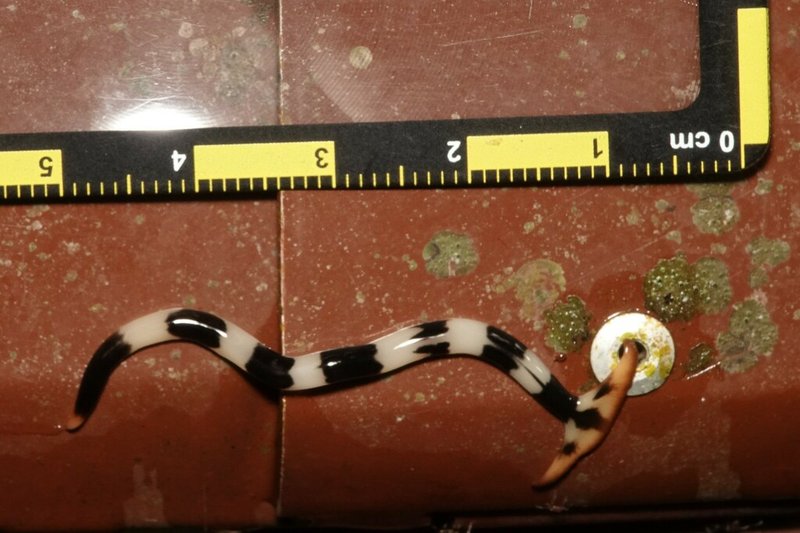
These worms are not just unique in appearance; they also play a vital role in their ecosystems. They can be found in tropical areas, often in moist, shady environments. If you’ve ever explored the lush landscapes of Southeast Asia, you might just stumble upon these fascinating creatures. But how does the hammerhead worm compare to other worms sharing its habitat? Let’s delve into this world, comparing it with similar species to understand their differences and roles in the ecosystem.
What is the Malayan Hammerhead Worm?
The Malayan hammerhead worm, scientifically known as *Bipalium kewense*, gets its name from its distinctive, hammer-shaped head. This shape is not just for show; it helps the worm navigate through its environment. Measuring up to 30 cm in length, these flatworms are often found hiding in leaf litter or under damp logs, making them masters of camouflage.
One interesting aspect of the hammerhead worm is its predatory nature. Unlike many other worms that primarily feed on decaying organic matter, the hammerhead worm hunts for its meals—often snatching up earthworms and other small invertebrates. This predation plays a critical role in controlling the population of these smaller species, showcasing how interconnected life is in these tropical ecosystems.
If you were to spot one, you’d notice its smooth, gliding motion. They have a unique way of moving, almost like a ribbon unfurling in the wind. You might also see them during the rainy season, as they are more active when the ground is moist.
Habitat and Distribution
The Malayan hammerhead worm thrives in tropical climates, particularly in Southeast Asia. You’ll typically find them in humid, shaded areas where the soil is rich in organic material. This preference makes rainforests and gardens their prime habitats. But it’s not just the hammerhead worm that loves these settings.
Other species, like the common earthworm, are found in the same moist environments. Earthworms, known for their burrowing habits, enrich soil quality by breaking down organic matter. They play a crucial role in soil health, while the hammerhead worm influences the balance of smaller predator-prey dynamics.
It’s fascinating to observe how these different species coexist in the same habitat. While both can be found under the same leaves, they fulfill different roles. The hammerhead worm’s role as a predator contrasts sharply with the earthworm’s role as a decomposer. This shows us how diverse life can be, even in seemingly similar environments.
Physical Characteristics: How Do They Compare?
When comparing the Malayan hammerhead worm to other worm species, one of the first things to notice is its appearance. The hammerhead worm’s flat, elongated body and distinctive head shape set it apart visually. In contrast, earthworms have a more cylindrical shape, which helps them burrow through the soil.
In terms of color, the hammerhead worm usually presents a brownish or grayish hue with lighter edges, while earthworms often display earthy tones that blend seamlessly into their surroundings. This coloration isn’t just for looks; it serves as a form of camouflage against predators.
Another aspect to consider is size. The hammerhead worm can grow quite long—up to 30 cm—while common earthworms tend to be shorter, averaging around 10-15 cm. You might think of the hammerhead worm as the giant of the worm world, while the earthworm is more like the neighborhood pet.
Feeding Habits: Predators vs. Decomposers
The feeding habits of the Malayan hammerhead worm are particularly interesting. As mentioned earlier, these worms are carnivorous. They actively hunt and consume smaller invertebrates, including earthworms—a stark contrast to the critters that live off decaying organic matter.
This predatory lifestyle shapes the ecosystem dramatically. By keeping populations of smaller worms in check, the hammerhead worm helps maintain a balance in the food web. On the other hand, earthworms play an essential role as decomposers. They break down organic material, enriching the soil and promoting plant growth.
So, if you think about it, both types of worms are like teammates on a sports field, each playing their position to keep the ecosystem thriving. It’s a great reminder of how nature balances itself, even with creatures that seem so different.
Reproduction and Lifespan
Reproduction is another area where the Malayan hammerhead worm showcases uniqueness. Unlike many other worms, which usually reproduce through simple means, hammerhead worms are known for their more complex reproductive strategies. They can reproduce asexually through fragmentation, meaning a single worm can grow into two if cut in half.
In contrast, earthworms primarily reproduce sexually, exchanging sperm with another worm to fertilize eggs. This difference in reproductive strategies highlights the adaptability of each species in their environments.
The lifespan of the Malayan hammerhead worm can vary, but they generally live several years, depending on their habitat and environmental conditions. Earthworms, on the other hand, typically have shorter lifespans, often living around 4-8 years. You might be wondering how their lifespans affect their roles in the ecosystem; it all ties back to their feeding habits and interactions within their environment.
Environmental Impact and Ecological Roles
Both the Malayan hammerhead worm and similar species play vital roles in their ecosystems. The hammerhead worm’s predation helps control smaller invertebrate populations, promoting diversity. When one species, like the earthworm, flourishes too much, it can lead to an imbalance. Through their hunting, hammerhead worms help keep this balance intact.
In contrast, earthworms’ contributions to soil health can’t be overstated. By consuming and breaking down organic matter, they recycle nutrients and improve soil structure. This activity leads to healthier plant life, benefiting the entire ecosystem.
When we look at these worms’ ecological impacts, it’s clear they contribute differently but equally to their environments. It’s a reminder that every creature, no matter how small, has a part to play in the grand tapestry of life.
Conservation and Threats
Unfortunately, habitat destruction poses a significant threat to the Malayan hammerhead worm and similar species. Deforestation and urbanization reduce their natural habitats, leading to declines in their populations. As these worms inhabit moist areas, changes in climate and soil health can also impact their survival.
On the other hand, invasive species can pose another challenge. If a new predator enters the scene, it might disrupt the delicate balance that the hammerhead worm has maintained in its ecosystem. This ripple effect can lead to diminished numbers of local species, making conservation efforts crucial.
Protecting their habitats and raising awareness about these organisms can help ensure their survival. After all, every creature contributes to the richness of our environment, and that includes the often-overlooked hammerhead worm.
Final Thoughts: Nature’s Intricacies
Comparing the Malayan hammerhead worm to other similar species reveals just how intricate nature can be. With their unique characteristics, behaviors, and roles in the ecosystem, these worms are a testament to the diversity of life.
Whether it’s the predatory hammerhead worm or the hardworking earthworm, both types showcase the importance of all living organisms working together in harmony. So next time you find yourself in a tropical paradise, take a moment to appreciate the small wonders beneath your feet. Understanding these creatures not only deepens our appreciation for nature but also highlights the importance of preserving it for future generations.

